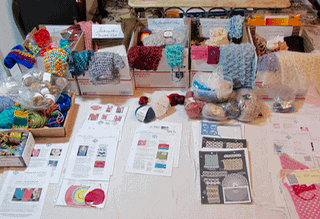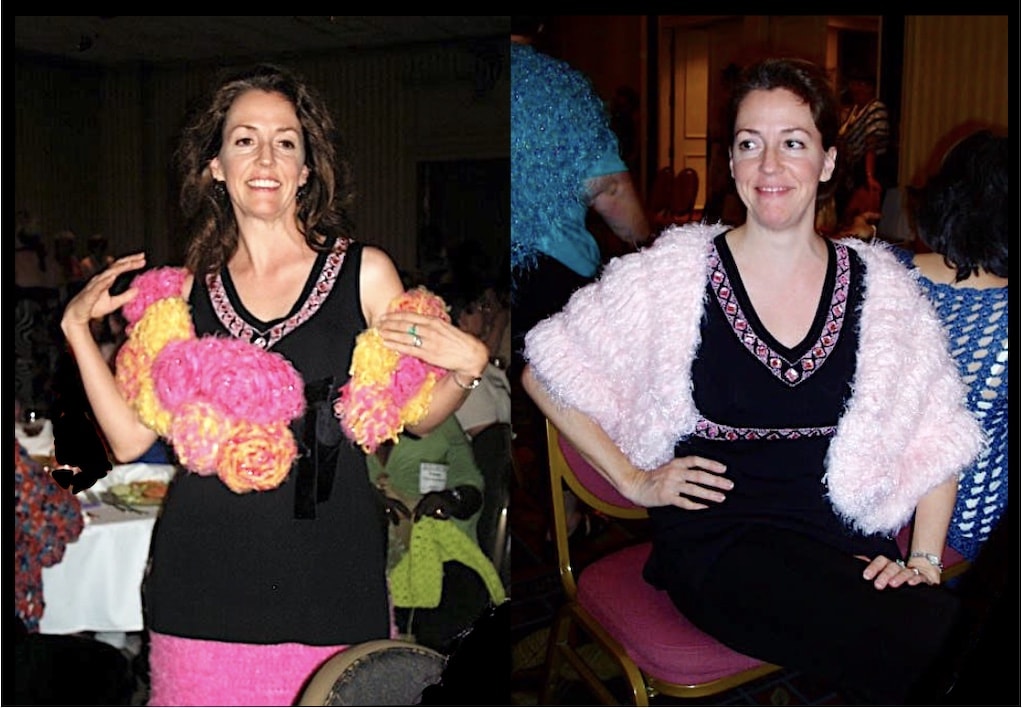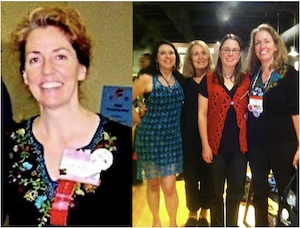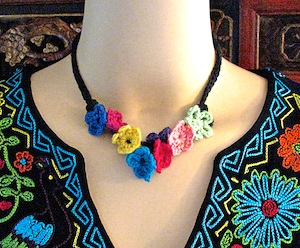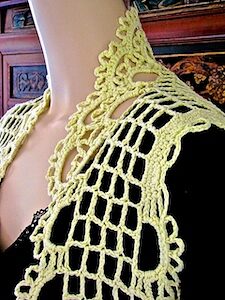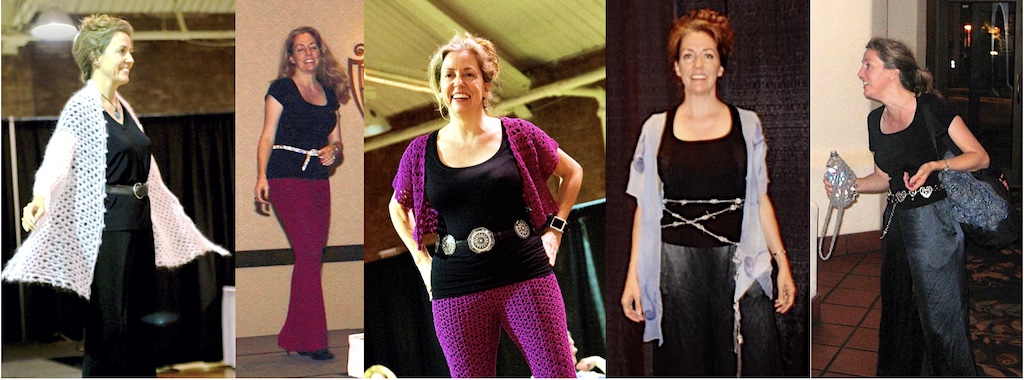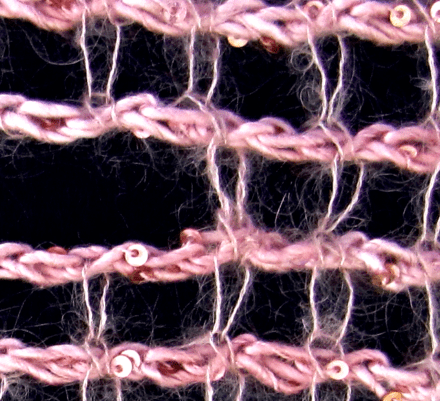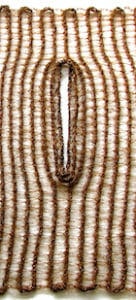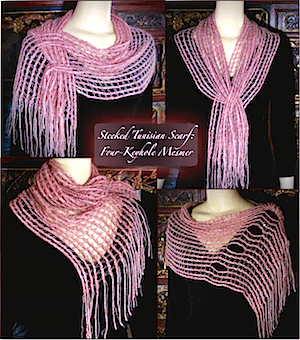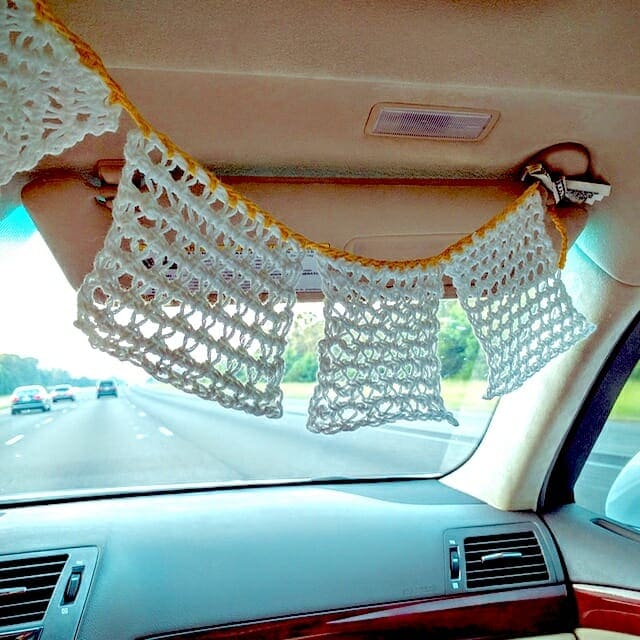
I crocheted together lacy Tunisian Lotus swatches in the car. It reminds me of Mexican “papel picado”. Worked out well for teaching! View full size.
This past June and July I blogged fifty days of crochet conference prep. I returned home from the conference on July 17. Today is August 18. What happened between then and now?
This is the first day that I could imagine sitting down to compose a blog post and enjoy it. That’s a full month of recovery from having a booth while also teaching several new crochet topics.
Here’s how the past 30 days went:
- I needed an immediate inventory of what I came home with, so the first thing I did was unpack a gazillion boxes of booth and teaching stuff.
- After counting everything, I put away what I could. This left me with five big heaps to sort and pack up carefully for future events. It took two weeks to work through these heaps step by step.
- It also took about two weeks to completely unpack suitcases and get through all the laundry only because I felt like such a zombie.
- Filled lots of orders that continued to come in every day from my website. (I love this about conferences: so many visitors to my website!)
- Discussed new color #20 of Lotus yarn with our mill.
- Slept and slept. Slept some more.
- Sat still happily without my mind racing. No adrenaline rushes, worries, or multitasking. Enjoyed what others were posting about their conference experiences.
- It took days to go through all of my emails.
- It took a full four weeks to settle all incoming and outgoing booth and teaching monies. (This would surprise me except that it took longer last year.)
- Thoughts: “I could maybe blog this. Or, tomorrow.” “What do I want to crochet next. No idea.” “What about next year? Not sure.”
Crochet Conference Prep Results
How it was better than last year’s:
I was careful to keep a more accurate and readable list of starting inventory. This way, after returning home, it was easy to compare with the ending inventory (and trust the numbers!). I had to force myself to be disciplined about this. While packing up the merchandise to ship up to the show, I could see when my starting amounts got fuzzier last year.
This year we shipped by UPS to a nearby UPS store, not to the event or show management company. It worked great this time: fast, cheap, and convenient.
Thanks to a tip from Doris who used to transport and manage the entire CGOA Design Contest, I purchased some giant clear blue zippered storage cubes. These are perfect for loading up every inch of a car with soft items (yarns and crocheted items).
Last year I felt like a zombie for months. A 2015 creative slump lasted for so long that I started to fear I was done with crochet designing altogether. This year I took endurance-building tonic herbs and vitamins for the weeks before and after the event. Maybe they worked! The creative slump only lasted 3 weeks this time. (Last year I also had jet lag.)
I like the pattern info tags I created at the last minute for the three shawls that George Shaheen of 10 Hours or Less designed in my Lotus yarn.
The “papel picado”-style swatch buntings (pictured above) that I crocheted on the way to Charleston worked out really well for me in classes because I could group them by technique and theme. I’m going to do this with more Lotus swatches.
*Blogging those fifty days of prep kept me focused on the present next step while also accountable to an observer (my blogging self). Plus it leaves me with tips for my future self.
